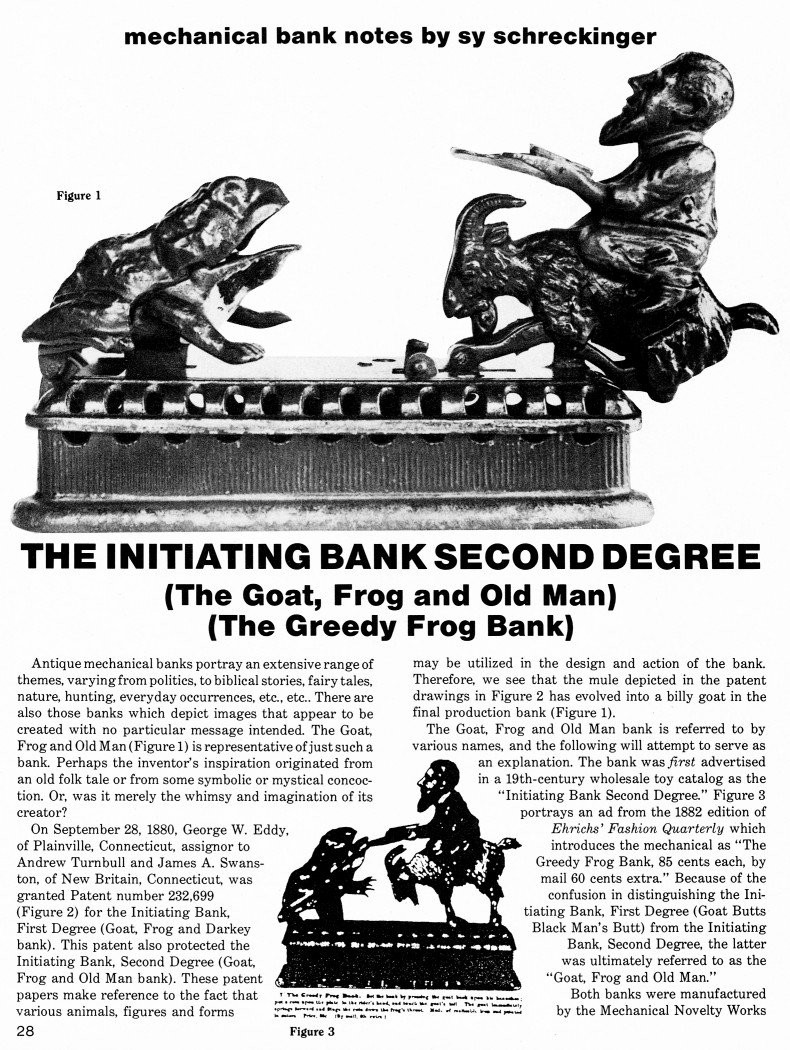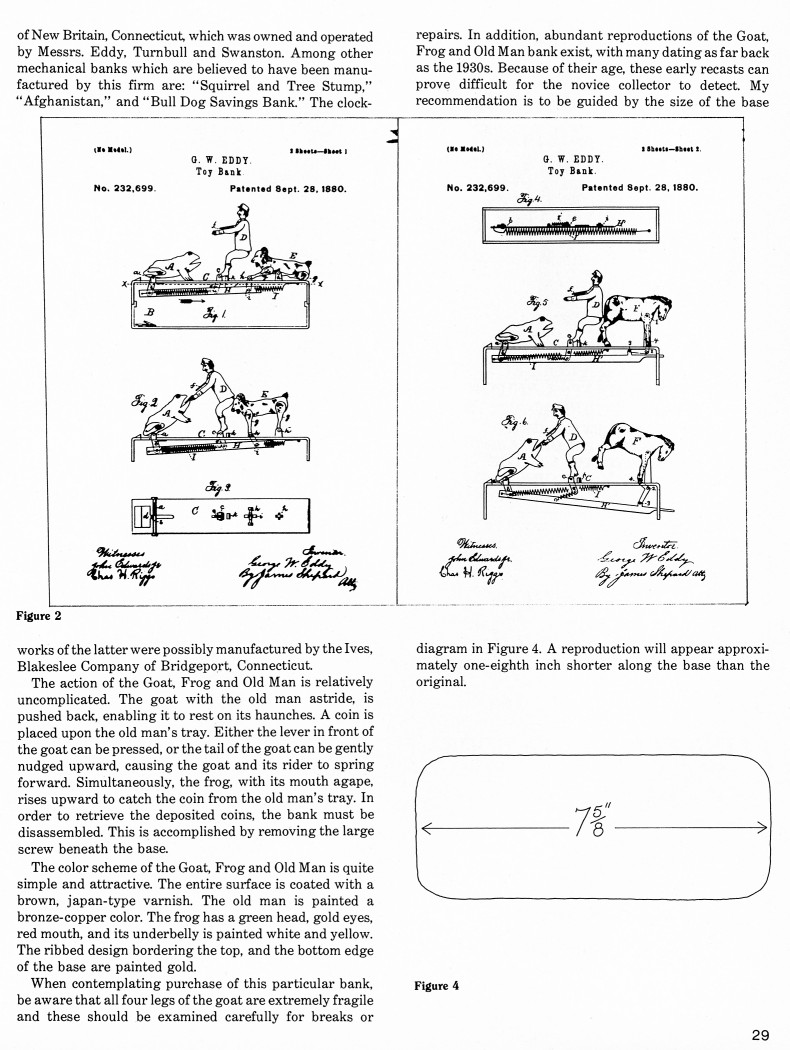|
The Initiating Bank Second Degree
(The Goat, Frog and Old Man — The Greedy Frog Bank)
by Sy Schreckinger – ANTIQUE TOY WORLD Magazine – November, 1986
Antique mechanical
banks portray an extensive range of themes, varying from politics, to
biblical stories, fairy tales, nature, hunting, everyday occurrences,
etc., etc.. There are also those banks which depict images that appear to
be created with no particular message intended. The Goat, Frog and Old Man
(Figure 1) is representative of just such a bank. Perhaps the inventor's
inspiration originated from an old folk tale or from some symbolic or
mystical concoction. Or, was it merely the whimsy and imagination of its
creator?
On September 28, 1880, George W. Eddy, of Plainville, Connecticut,
assignor to Andrew Turnbull and James A. Swanston, of New Britain,
Connecticut, was granted Patent number
232,699 (Figure 2) for the
Initiating Bank, First Degree (Goat, Frog and Darkey bank). This patent
also protected the Initiating Bank, Second Degree (Goat, Frog and Old Man
bank). These patent papers make reference to the fact that various
animals, figures and forms may be utilized in the design and action of the
bank. Therefore, we see that the mule depicted in the patent drawings in
Figure 2 has evolved into a billy goat in the final production bank
(Figure 1).
The Goat, Frog and Old Man bank is referred to by various names, and
the following will attempt to serve as an explanation. The bank was first
advertised in a 19th-century wholesale toy catalog as the "Initiating Bank
Second Degree." Figure 3 portrays an ad from the 1882 edition of Ehrichs'
Fashion Quarterly which introduces the mechanical as "The Greedy Frog
Bank, 85 cents each, by mail 60 cents extra." Because of the confusion in
distinguishing the Initiating Bank, First Degree (Goat Butts Black Man's
Butt) from the Initiating Bank, Second Degree, the latter was ultimately
referred to as the "Goat, Frog and Old Man."
Both banks were manufactured by the Mechanical Novelty Works of New
Britain, Connecticut, which was owned and operated by Messrs. Eddy,
Turnbull and Swanston. Among other mechanical banks which are believed to
have been manufactured by this firm are: "Squirrel and Tree Stump,"
"Afghanistan," and "Bull Dog Savings Bank." The clockworks of the latter
were possibly manufactured by the Ives, Blakeslee Company of Bridgeport,
Connecticut.
The action of the Goat, Frog and Old Man is relatively uncomplicated.
The goat with the old man astride, is pushed back, enabling it to rest on
its haunches. A coin is placed upon the old man's tray. Either the lever
in front of the goat can be pressed, or the tail of the goat can be gently
nudged upward, causing the goat and its rider to spring forward.
Simultaneously, the frog, with its mouth agape, rises upward to catch the
coin from the old man's tray. In order to retrieve the deposited coins,
the bank must be disassembled. This is accomplished by removing the large
screw beneath the base.
The color scheme of the Goat, Frog and Old Man is quite simple and
attractive. The entire surface is coated with a brown, japan-type varnish.
The old man is painted a bronze-copper color. The frog has a green head,
gold eyes, red mouth, and its underbelly is painted white and yellow. The
ribbed design bordering the top, and the bottom edge of the base are
painted gold.
When contemplating purchase of this particular bank, be aware that
all four legs of the goat are extremely fragile and these should be
examined carefully for breaks or repairs. In addition, abundant
reproductions of the Goat, Frog and Old Man bank exist, with many dating
as far back as the 1930s. Because of their age, these early recasts can
prove difficult for the novice collector to detect. My recommendation is
to be guided by the size of the base diagram in Figure 4. A reproduction
will appear approximately one-eighth inch shorter along the base than the
original.
|


